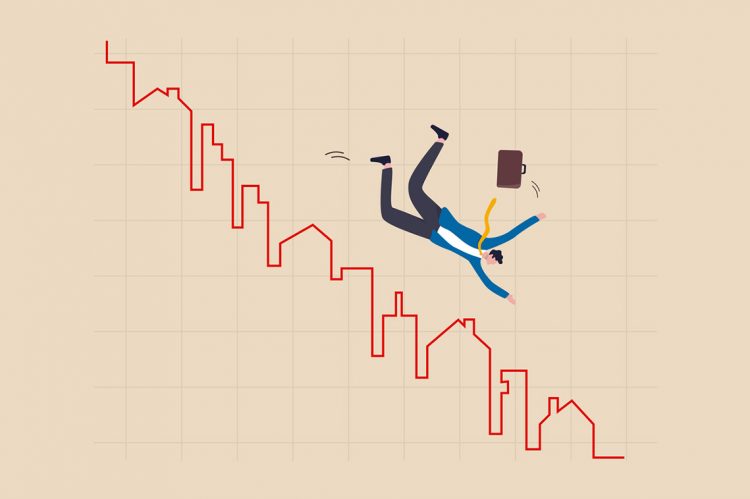Construction of new homes fell more than expected in July, to its lowest level in over a year, according to new data released today from the U.S. Census Bureau and U.S Department of Housing and Urban Development (HUD).
The new data show housing starts decreased to a seasonally adjusted rate of 1.446 million, a 9.6% decrease from the previous month and down 8.1% YoY. Here are the July numbers:
Building Permits: 1,674,000
Housing Starts: 1,446,000
Housing Completions: 1,424,000
Building permits
Privately‐owned housing units authorized by building permits in July were at a seasonally adjusted annual rate of 1,674,000. This is 1.3% below the revised June rate of 1,696,000, but is 1.1% above the July 2021 rate of 1,655,000. Single‐family authorizations in July were at a rate of 928,000; this is 4.3% below the revised June figure of 970,000. Authorizations of units in buildings with five units or more were at a rate of 693,000 in July.
Housing starts
Privately‐owned housing starts in July were at a seasonally adjusted annual rate of 1,446,000. This is 9.6% (±8.6%) below the revised June estimate of 1,599,000 and is 8.1% (±11.9%) below the July 2021 rate of 1,573,000. Single‐family housing starts in July were at a rate of 916,000; this is 10.1% (±10.8%) below the revised June figure of 1,019,000. The July rate for units in buildings with five units or more was 514,000.
Housing completions
Privately‐owned housing completions in July were at a seasonally adjusted annual rate of 1,424,000. This is 1.1% (±14.8%) above the revised June estimate of 1,409,000 and is 3.5% (±15.5%) above the July 2021 rate of 1,376,000. Single‐family housing completions in July were at a rate of 1,009,000; this is 0.8% (±12.2%) below the revised June rate of 1,017,000. The July rate for units in buildings with five units or more was 412,000.
What the experts are saying:
“Construction starts of both single-family and multifamily housing units fell in July. The decline in single-family starts to 916,000 annualized units is the lowest since the COVID-19 lockdown months in the spring of 2020 and essentially matches the annual total of 888,000 in 2019 before the pandemic. The decline in multifamily starts to 530,000 (from 580,000 in the prior month) could be just the normal month-to-month volatility in apartment buildings. What is important is that multifamily construction is on pace this year to reach the highest activity in more than 30 years,” said NAR Chief Economist Lawrence Yun. “Rapidly rising rents are economic incentives for building rental housing. Homebuilders are naturally very cautious about rising unsold inventory during the construction phase. But those completed homes are finding buyers within three months, which is relatively swift for the new homes market. Improving conditions within the supply chain for the delivery of items such as lumber and appliances will lessen overall uncertainty. Moreover, demographics still suggest a sizable housing shortage. If mortgage rates remain near 5%, after reaching 6% in early June, there could be renewed buyer activity and additional inventory declines. Half of existing homes can still command the full listing price.”












